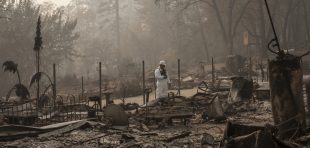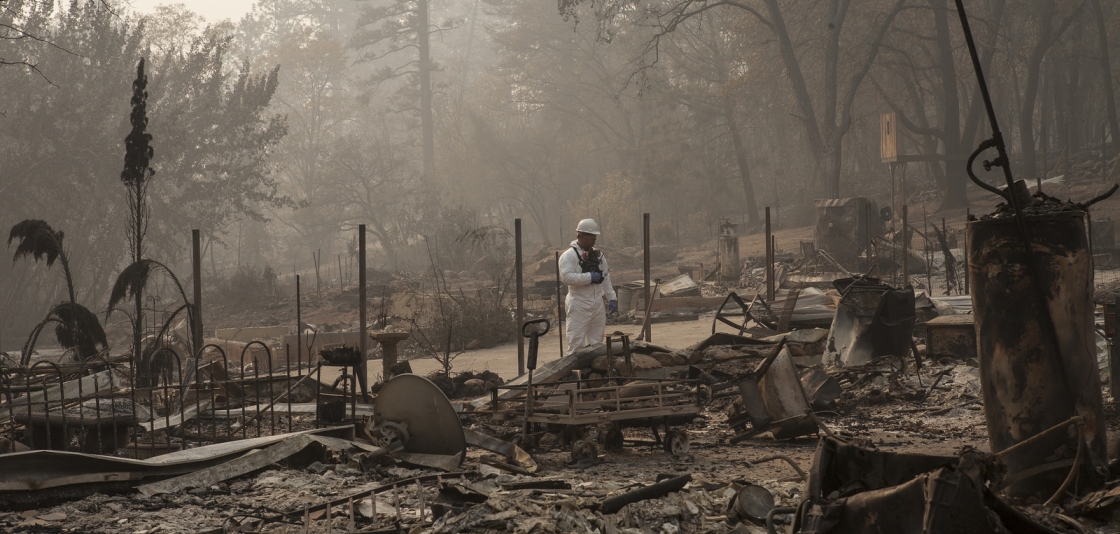You’ve probably already seen yesterday’s tweet from President Trump regarding FEMA funding for victims of California’s wildfires. But just in case, here is the original transcript:

Last November’s Camp Fire decimated the town of Paradise, Calif., and claimed at least 88 lives.
“Billions of dollars are sent to the State of California for Forrest fires that, with proper Forrest Management, would never happen. Unless they get their act together, which is unlikely, I have ordered FEMA to send no more money. It is a disgraceful situation in lives & money!”
(He sent the tweet again a short time later, removing the two extraneous “r’s” but leaving everything else as is.)
It’s hard to know where to begin in reacting to such a statement.
Bill Gabbert, who runs the website “Wildfire Today,” aptly wrote that “(i)f our President is going to try to influence how state or federal land management agencies manage their forests, he needs to know enough about the issue to spell the word correctly.”
House Speaker Nancy Pelosi (D-Calif.) tweeted that “Trump’s threat insults the memory of scores of Americans who perished in wildfires last year & thousands more who lost their homes.”
Others pointed out that the federal government—not the state government—manages more than 20 million acres in California, which accounts for about 60 percent of all the state’s forests.
But there’s more going on here than glaring spelling errors and an appalling lack of compassion.
Trump has famously proclaimed that wildfires like the one that decimated Paradise, Calif., last year could be prevented if forest managers would do more “raking.” As abjectly absurd such a statement is, the assumption that wildfires can be stopped if we only did more logging is one that is shared by people across the political spectrum who should know better.
You can start with the money. Comprehensive thinning work in forests such as the ones surrounding Paradise generally costs around $1,000 per acre. That’s because there’s little demand for the slash and small-diameter vegetation that must be removed if such a project is to have any chance of success.
Thinning the approximately 33 million acres of forestlands in California would therefore cost around $33 billion. That doesn’t include the ongoing costs of periodically clearing out those areas to maintain desired conditions.
But there’s another reality that is often overlooked: There’s not much solid science showing that such “active management” projects are effective in preventing wildfires. In fact, there’s a persuasive body of evidence suggesting that most logging activities increase the likelihood of wildfires, by allowing greater wind speeds to fuel the flames and by encouraging the growth of flammable invasive species.
And there’s this: As soon as the flames began to burn structures in Paradise, the Camp Fire ceased to be a “forest fire” at all, at least not within the community’s boundaries.
Many of the thousands of homes that burned in Paradise were wooden structures, some as close as 14 to 18 feet of each other. If one home catches fire in such densities, the radiant heat alone is likely to ignite homes on either side.
In November, Trump’s secretary of agriculture Sonny Perdue, who oversees the Forest Service, suggested that wood from the surrounding Plumas National Forest should be donated to rebuild Paradise.
Like many statements from the Trump administration, that one has yet to be acted on. Nor, of course, should it. The Los Angeles Times editorial board said it as well as anyone:
“To rebuild Paradise as it was would be land-use malpractice. The question facing state and local authorities is whether Paradise—and other towns that have burned—can be rebuilt to withstand the next, inevitable wildfire.”


